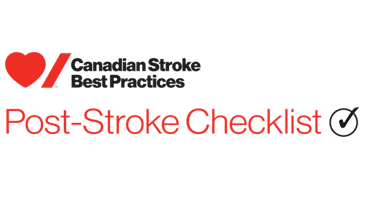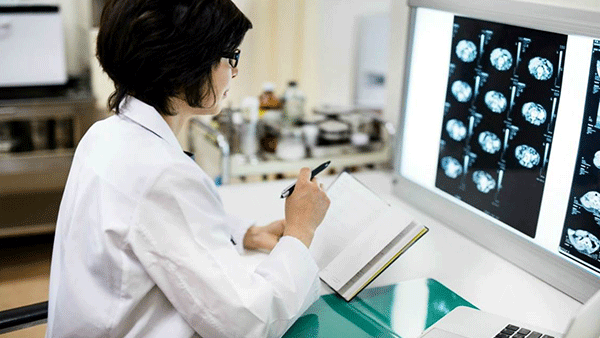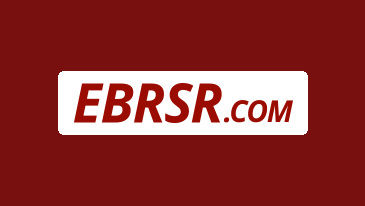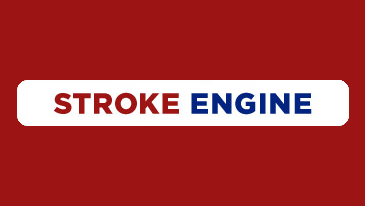- Definition and Considerations
- 1. Initial Stroke Rehabilitation Assessment
- 2. Stroke Rehabilitation Unit Care
- 3. Delivery of Inpatient Stroke Rehabilitation
- 4. Outpatient and In-Home Stroke Rehabilitation (including Early Supported Discharge)
- 5.1 Management of the Upper Extremity Following Stroke
- 5.2. Range of Motion and Spasticity in the Shoulder, Arm and Hand
- 5.3. Management of Shoulder Pain & Complex Regional Pain Syndrome (CRPS) following Stroke
- 6.1. Balance and Mobility
- 6.2. Lower Limb Spasticity following Stroke
- 6.3. Falls Prevention and Management
- 7. Assessment and Management of Dysphagia and Malnutrition following Stroke
- 8. Rehabilitation of Visual and Perceptual Deficits
- 9. Management of Central Pain
- 10. Rehabilitation to Improve Language and Communication
- 11. Virtual Stroke Rehabilitation
Recommendations
Evidence Grading System: For the purposes of these recommendations ‘early’ refers to strength of evidence for therapies applicable to patients who are less than 6 months post stroke, and ‘late’ refers to strength of evidence for therapies applicable to patients who are more than 6 months from index stroke event.
A. General Principles
- Patients should engage in training that is meaningful, engaging, repetitive, progressively adapted, task-specific and goal-oriented in an effort to enhance motor control and restore sensorimotor function [Evidence Level: Early-Level A; Late-Level A].
- Training should encourage the use of patients’ affected limb during functional tasks and be designed to simulate partial or whole skills required in activities of daily living (e.g. folding, buttoning, pouring, and lifting) [Evidence Level: Early-Level A; Late-Level A].
B. Specific Therapies
Note: Selection of appropriate therapies will differ between patients and depend on the severity of the impairment. This should be considered when establishing individualized rehabilitation plans.
- Range of motion exercises (passive and active assisted) that includes placement of the upper limb in a variety of appropriate and safe positions within the patient’s visual field should be provided [Evidence Level C]. Refer to Recommendation 5.3 for additional information.
- Following assessment to determine if they are suitable candidates, patients should be encouraged to engage in mental imagery to enhance upper-limb, sensorimotor recovery [Evidence Level: Early-Level A; Late-Level B].
- Functional Electrical Stimulation (FES) targeted at the wrist and forearm muscles should be considered to reduce motor impairment and improve function [Evidence Level: Early-Level A; Late-Level A].
- Traditional or modified constraint-induced movement therapy (CIMT) should be considered for a select group of patients who demonstrate at least 20 degrees of active wrist extension and 10 degrees of active finger extension, with minimal sensory deficits and normal cognition [Evidence Level: Early-Level A; Late-Level A].
- Mirror therapy should be considered as an adjunct to motor therapy for patients with very severe paresis. It may help to improve upper extremity motor function and ADLs. [Evidence Level: Early-Level A; Late-Level A].
- Despite mixed evidence, sensory stimulation (e.g., transcutaneous electrical nerve stimulation [TENS], acupuncture, biofeedback) can be considered as an adjunct to improve upper extremity function [Evidence Level B].
- Virtual reality, including both immersive technologies such as head mounted or robotic interfaces and non-immersive technologies such as gaming devices can be used as adjunct tools to other rehabilitation therapies as a means to provide additional opportunities for engagement, feedback, repetition, intensity and task-oriented training [Evidence Level: Early-Level A; Late-Level A].
- Therapists should consider supplementary training programs aimed at increasing the active movement and functional use of the affected arm between therapy sessions, e.g. Graded Repetitive Arm Supplementary Program (GRASP) suitable for use during hospitalization and at home [Early - Evidence Level B ; Late – Evidence Level C].
- Strength training should be considered for persons with mild to moderate upper extremity impairment for improvement in grip strength [Evidence Level: Early-Level A; Late-Level A). Strength training does not aggravate tone or pain [Evidence Level A].
- Bilateral arm training is not recommended over unilateral arm training to improve upper extremity motor function [Evidence Level A].
- Non-invasive brain stimulation, including repetitive transcranial magnetic stimulation (rTMS) and transcranial direct current stimulation (tDCS) could be considered as an adjunct to upper extremity therapy [Evidence Level A (rTMS); Evidence Level B (tDCS)].
- For patients who are unable to produce any voluntary muscle activity in the affected upper limb, the patient (and caregiver) should be taught compensatory techniques and be provided with adaptive equipment to enable basic activities of daily living (ADLs) [Evidence Level B].
- It is reasonable to continue teaching compensatory techniques until the patient can manage basic ADLs independently or until recovery of active movement occurs [Evidence Level C].
- Retraining trunk control should accompany functional training of the affected upper extremity [Evidence Level C].
C. Adaptive Devices
- Adaptive devices designed to improve safety and function may be considered if other methods of performing specific functional tasks are not available or tasks cannot be learned [Evidence Level C].
- Functional dynamic orthoses may be offered to patients to facilitate repetitive task-specific training [Evidence Level B].
Arm and hand function is frequently reduced following stroke, limiting stroke survivors’ ability to perform activities of daily living. Unfortunately, a large number of stroke survivors with initial arm weakness do not regain normal function; however, many therapeutic techniques have been developed for those individuals who have minimal arm movement.
People with stroke provided feedback that emphasized the importance of education on adaptive devices and to ensure their families and caregivers are included in this education. This education should include the potential costs of the devices.
To achieve timely and appropriate assessment and management of upper extremity function the organization requires:
- Initial standardized arm and hand function assessment performed by clinicians experienced in the field of stroke.
- Timely access to specialized, interdisciplinary stroke rehabilitation services where therapies of appropriate type and intensity are provided.
- Access to appropriate equipment (such as functional electrical stimulation).
- Long-term rehabilitation services widely available in nursing and continuing care facilities, and in outpatient and community programs.
- Robotics are an emerging and developing area and stroke rehabilitation programs should begin to build capacity to integrate robotic technology into stroke rehabilitation therapy to appropriate patients as the research evidence suggests, and in the future incorporate this therapy as part of comprehensive therapy where available.
- Extent of change (improvement) in functional status scores using a standardized assessment tool from admission to an inpatient or community-based rehabilitation program to discharge.
- Extent of change in arm and hand functional status scores using a standardized assessment tool from admission to an inpatient or community-based rehabilitation program to discharge.
- Median length of time from stroke admission in an acute care hospital to assessment of rehabilitation potential by a rehabilitation healthcare professional.
- Median length of time spent on a stroke unit during inpatient rehabilitation
- Median hours per day of direct task-specific therapy provided by the interdisciplinary stroke team.
- Average days per week of direct task specific therapy provided by the interdisciplinary stroke team (target is a minimum of five days).
Measurement Notes:
- A data entry process will need to be established to capture the information from the outcome tools such as the Chedoke-McMaster Stroke Assessment (e.g., ARAT or WMFT).
- FIM® Instrument data is available in the National Rehabilitation Reporting System (NRS) database at the Canadian Institute of Health Information (CIHI) for participating organizations.
- For Performance Measure 5, the direct therapy time is considered 1:1 time between therapist and patient and does not include group sessions or time spent on documentation.
- Table 1: Stroke Rehabilitation Screening and Assessment
- FIM® Instrument
- AlphaFIM® Instrument
- Chedoke-McMaster Stroke Assessment Scale
- Chedoke-McMaster Arm and Hand Activity Inventory
- Modified Ashworth Scale
- Box and Block Test
- Nine Hole Peg Test
- Fugl-Myer Assessment of Sensory-Motor Recovery
- Chedoke-McMaster Arm and Hand Activity Inventory (CAHAI)
- Action Research Arm Test
- Wolf Motor Function Test
- Stroke Engine
Information for People with Stroke, their Families and Caregivers
- Taking charge of your stroke recovery: Rehabilitation and recovery infographic
- Taking charge of your stroke recovery: Transitions and community participation infographic
- Aphasia Institute
- Post Stroke Checklist
- Stroke Resources Directory
- Your Stroke Journey
- Stroke Engine
- Heart and Stroke Foundation Canadian Partnership for Stroke Recovery
Evidence Table and Reference List
Task-Specific Training
Task-specific training involves the repeated practice of functional tasks, which combines the elements of intensity of practice and functional relevance. The tasks should be challenging and progressively adapted and should involve active participation. French et al. (2016) included the results from 11 randomized controlled trials (RCTs) that included an upper limb rehabilitation component. Repetitive task-specific training was associated with a small treatment effect on arm and hand function, assessed post intervention. (SMD=0.25, 95% CI 0.01 to 0.49, p=0.045 and SMD=0.25, 95% CI 0.00 to 0.51, p=0.05, respectively). The benefits appeared to persist up to 6 months follow-up. Patients treated from 16 days to 6 months post stroke derived the greatest value. In contrast to these findings, in an earlier systematic review of motor recovery following stroke, Langhorne et al. (2009) identified 8 RCTs of repetitive task training, specific to the upper-limb. In these trials, treatment duration varied widely from a total of 20 to 63 hours provided over a 2 week to 11-week period. Therapy was not associated with significant improvements in arm function (SMD=0.19, 95% CI -0.01 to 0.38) or hand function (SMD= 0.05, 95% CI -0.18 to 0.29). Perhaps the inclusion of trials that evaluated repetitive task training in addition to task-oriented training was, in part, responsible for the null result. In a crossover RCT, Shimodozone et al. (2013) randomized 49 participants in the sub-acute phase of stroke to one of two groups: 1) repetitive facilitative exercise (RFE), or 2) control-conventional rehabilitation program. Both groups received 40 min sessions 5x/wk. for 4 weeks of their allocated treatment. Both groups performed 30 min/day of dexterity-related training immediately after each treatment session and continued their participation in a standard inpatient rehabilitation program. Action Research Arm Test (ARAT) and the Fugl-Meyer Assessment (FMA) were assessed at baseline, and at week 2 and 4. After 4 weeks of treatment, significantly greater improvements on the ARAT (p=0.009) and FMA (p=0.019) were demonstrated by the RFE group compared to the control group.
Mental Practice
Mental practice is the process whereby an individual repeatedly rehearses tasks mentally without physically performing them, with the goal of improving actual performance. When used in addition to structured therapy, mental practice can improve measures of upper-limb impairment and disability. A large treatment effect (upper-extremity function: SMD=1.37, 95% CI 0.60 to 2.15, p<0.0001) was reported by Barclay-Goddard et al. (2011) in a Cochrane review, which included the results from 6 RCTs. The length of treatment ranged from 3 to 10 weeks.
Constraint Induced Movement Therapy
Traditional constraint-induced movement therapy (CIMT) involves restraint of the unaffected arm for at least 90 percent of waking hours, in addition to a minimum of six hours a day of intense upper-extremity (UE) training of the affected arm every day for two weeks. This form of therapy may be effective for a select group of patients who demonstrate some degree of active wrist and arm movement and have minimal sensory or cognitive deficits. Evidence from the VECTORS trial (Dromerick et al. 2009) suggests that traditional (intensive) CIMT should not be used for individuals in the first month post stroke, and in fact may be associated with worse outcomes. Patients who were randomized to receive 3 hours of intensive therapy in addition to wearing a constraint for 6 hours/day had lower ARAT scores at 3 months compared with patients who had received conventional occupational therapy or standard CIMT for 2 hours each day. In the largest RCT of conventional CIMT (Wolf et al. 2006), which included 222 patients, recruited 3-9 months post stroke, patients in the CIMT group had significantly greater improvement in Wolf Motor Function Tests (WMFT) scores and Motor Activity Log (MAL) (Amount of Use and Quality of Movement sub scores) at 12 months, compared with patients in the control group who received usual care, which could range from no therapy to a formal structured therapy program.
Modified constraint-induced movement therapy (m-CIMT) is a more feasible therapy option when resources are limited. In the most common variation of traditional CIMT, the unaffected arm is restrained with a padded mitt or arm sling for five hours a day, and with half-hour blocks of 1:1 therapy provided for up to 10 weeks (Page et al. 2013). The results from several good-quality RCTs suggest that patients who received mCIMT in the subacute or chronic phase of stroke experienced greater functional recovery compared with patients who received traditional occupational therapy. In the EXPLICIT trial (Kwakkel et al. 2016) 58 participants in the acute phase of stroke were randomized to a usual care group of a modified CIMT (mCIMT), which involved restraint for 3 hours, 5 days a week for 3 weeks in addition to 60 minutes of supervised intensive graded practice focused on improving task-specific use of the paretic arm and hand. There was significantly greater improvement in the mCIMT group on ARAT scores, the primary outcome, from baseline to 5, 8- and 12-weeks following treatment, but not at 26 weeks. There were no significant differences between groups on impairment measures, such as the FMA of the arm, or Motricity Index scores.
Liu et al. (2017) included the results of 16 RCTs examining m-CIMT or CIMT in the acute or subacute stage of stroke and reported significantly greater gains in Action Research Arm Test, Barthel Index, Fugl-Meyer Assessment, and Motor Activity Log scores (amount of use and quality of use) compared with the control condition. A Cochrane review (Corbetta et al. 2015) included the results from 42 RCTs examining both CIMT and m-CIMT, across the spectrum of the stroke recovery continuum. Overall, neither form of CIMT (traditional or modified) was associated with a significant improvement in standardized measures of disability (SMD=0.24, 95% CI -0.05 to 0.52) at the end of treatment, or at 6 to 12 months follow-up (SMD=-0.21, 95% CI -0.57 to 0.16), compared with usual care. CIMT was associated with significant improvements in arm motor function, dexterity and measures of arm motor impairment. The results from this review are difficult to interpret since trials of all forms of CIMT were included as were patients in all stages of stroke recovery.
GRASP
Evidence from a single trial evaluating the Graded Repetitive Arm Supplementary Program (GRASP) program suggests that additional therapy, performed outside of regular therapy can improve upper-limb function (Harris et al. 2009). In this multi-site RCT, 103 patients recruited an average of 21 days following stroke with upper-extremity Fugl Meyer scores between 10 and 57, were randomized to participate in a 4 week (one hour/day x 6 days/week) homework-based, self-administered program designed to improve ADL skills through strengthening, ROM and gross and fine motor exercises or to a non-therapeutic education control group At the end of the treatment period, participants in the GRASP group had significantly higher mean Chedoke Arm & Hand Activity Inventory, ARAT and MAL scores compared with the control group. The improvement was maintained at 3 months follow-up.
Virtual Reality
Laver et al. (2017) included the results of 22 RCTs in a Cochrane review examining the effectiveness of virtual reality, mainly using commercially available gaming consoles. Compared with conventional treatment, virtual reality interventions were not associated with significant improvements in measures of upper-limb function, at either the end of treatment, or at 3 months, (SMD=0.07, 95% CI -0.05 to 0.20 and SMD=0.11, 95% CI -0.10 to 0.32, respectively). However, when virtual reality was used in addition to usual care (providing a higher dose of therapy for those in the intervention group) there was a statistically significant difference between groups (SMD= 0.49, 0.21 to 0.77, 10 studies). When assessments were conducted using the FMA (upper-extremity) at the end of treatment, there was a significant treatment effect of virtual reality. The results from several recent RCTs (Aide et al., 2017, Brunner et al. 2017, Kong et al., 2016, Saposnik et al. 2016) indicated that virtual reality was not associated with significant improvements in Action Research Arm Test scores, or a variety of other outcomes, including Canadian Occupational Performance Measure, Stroke Impact Scale, Functional Independence Measure, or FMA.
Mirror Therapy
Mirror therapy is a technique that uses visual feedback about motor performance to enhance upper-limb function following stroke and reduce pain. Zeng et al. (2017) included the results from 11 RCTs and reported that mirror therapy was associated with significantly increased motor impairment compared with the control condition (SMD=0.51, 95%CI 0.29-0.73). Evidence from a Cochrane review (Thieme et al. 2012), which included the results from 14 RCTs, indicated a modest treatment effect associated with mirror therapy. There were significant improvements in motor function, the primary outcome, both immediately following treatment (SMD=0.61; 95% CI 0.22 to 1.0, p= 0.002) and at 6 months (SMD=1.09; 95% CI 1.09 to 1.87, p= 0.0068). There were also improvements in performance of ADLs (SMD=0.33, 95% CI 0.05 to 0.60, p=0.02) and pain (SMD= -1.1, 95% CI -2.10 to -0.09, p=0.03). Radajewska et al. (2013) randomized 60 participants 1:1 (mean 9.25 wk post stroke) to a mirror therapy (MT) or a control group, in addition to standard rehabilitation. Within each group, participants were divided into left- versus right-arm paresis subgroups. The treatment group received 15-minute sessions of mirror therapy 2x/day, 5d/wk for 3 wk. In the left-hand subgroups, those in the MT group showed a significantly greater improvement in Frenchay Arm Test scores compared with controls (p=0.035), but there were no significant between-group differences on Motor Status Scale scores or Functional Index ‘Repty’. In the right-hand subgroups, there were no significant between-group differences over time for any of the outcomes.
Functional Electrical Stimulation
While functional electrical stimulation (FES) has been investigated extensively in the rehabilitation of the lower extremity and for preventing/treating shoulder subluxation, there is a smaller literature base for its use as a modality to improve upper-extremity function. Eraifej et al. (2017) included the results of 20 RCTs in a systematic review that evaluated the ability of FES to improve activities of daily living and motor function. Pooling data from 8 trials, there was no significant difference between groups in ADL performance (SMD=0.64, 95% CI -0.02 to 1.30, p=0.06);however, in sub group analysis including 5 trials, persons who received FES during the acute phase of stroke (within 2 months) did improve their ADL performance with FES (SMD=1.24, 95% CI 0.46 to 2.03, p=0.002). FES was associated with significant improvement in Fugl-Meyer Assessment scores (MD=6.72, 95% CI 1.76, 11.68, p=0.008). In the EXPLICIT trial, Kwakkel et al. (2016) reported the group that received EMG-triggered neuromuscular electrical stimulation on finger extensors for 60 minutes a day for 3 weeks did not have significantly better outcomes on a wide variety of outcome measures compared with the group that received conventional rehabilitation only. Vafadar et al. (2015) pooled the results from 10 trials evaluating the use of FES for the rehabilitation of shoulder subluxation, pain, and upper arm motor function. Pooling the results from 5 trials, FES was not associated with significant improvements in arm motor function when initiated early post stroke, compared with conventional therapy (SMD=0.36, 95% CI -0.27 to 0.99, p=0.26). Pooling of results was not possible for an evaluation of FES in the chronic stage of stroke.
Bilateral/Unilateral Arm Training
The evidence that bilateral arm training is superior to conventional rehabilitation, is conflicting, and very much dependent on the outcome used for assessment. A Cochrane review (Coupar et al. 2010), which included the results from 18 RCTs, indicated that, compared with conventional care, bilateral training was not associated with significantly better scores on measures of arm function, ADL performance or extended ADL, but did improve motor impairment. In another systematic review, Van Delden et al. (2012) reported significantly greater improvements in measures of function (SMD=0.20, 95% CI 0.0–0.4; p=0.05), but not impairment or performance.
Strength Training
In a systematic review, including 13 RCTs, (Harris & Eng (2010) reported that therapy programs including a strength training or resistance training component were associated with significant improvements in motor function (SMD=0.21, 95%CI 0.03–0.39, p=0.03), grip strength (SMD=0.95, 95% CI 0.05 to 1.85, p=0.04), but not performance of ADLs (SMD=0.26, 95% CI -0.10 to 0.63, p=0.16). Improvements were noted in both the acute and chronic stages of stroke.
Non-invasive brain stimulation
Non-invasive brain stimulation using either transcranial direct-current stimulation (tDCS) or repetitive transcranial magnetic stimulation (rTMS) have been shown to be potential useful forms of treatment for upper-extremity rehabilitation. Chhatbar et al. (2016) included the results from 8 RCTs (213 subjects) investigating the role of tDCS (≥5 sessions) in post stroke recovery of upper limb, compared with a sham condition. tDCS was associated with significantly greater improvements in FMA (upper extremity scores) compared with sham treatment (SMD=0.61, 95% CI 0.08 to 1.13, p=0.02). Treatment effects were more pronounced in the chronic vs. acute stage of stroke (SMD=1.23 vs. SMD=0.18). However, the results from another systematic review (Triccas et al. 2016) using many of the same trials and which also used FMA as an outcome, did not find that tDCS improved upper-extremity Fugl-Meyer Assessment scores, immediately following intervention (SMD=0.11, 95% CI -0.17 to 0.38, p=0.44), or after short- or long-term follow-up (n=2: SMD=0.27, 95% CI -0.40 to 0.95, p=0.43 and SMD=0.23, 95% CI-0.17 to 0.62, p=0.26, respectively).
In the Navigated Inhibitory rTMS to Contralesional Hemisphere Trial (NICHE), Harvey et al. (2018) randomized 199 patients with a unilateral ischemic or hemorrhagic stroke occurring within 3 to 12 months of enrollment, with a Chedoke assessment stage of 3-6 for both arm and hand, to receive low-frequency (1 Hz) active or sham rTMS to the noninjured motor cortex before each 60-minute therapy sessions, delivered over 6-weeks. At the end of 6 months, 67% of the experimental group and 65% of sham group improved ≥5 points on 6-month upper extremity FMA (p=0.76). There was also no difference between experimental and sham groups in the ARAT (p=0.80) or WMFT (p=0.55) scores. Li et al. (2016) reported no differences between high and low frequency rTMS (10 and 1 Hz), provided for 20 minutes for 2 weeks. Compared with sham stimulation, patients in both active rTMS groups experienced significantly greater improvement in mean FMA (upper extremity) scores at the end of the treatment period, with no significant differences between groups in mean Wolf Motor Function Test scores. Graef et al. (2016) included the results of 11 RCTs evaluating the effect of rTMS on upper limb motor function. Active rTMS was not associated with significantly greater improvement in FMA (upper extremity) scores compared with sham treatment (MD=0.5, 95% CI -0.2 to 3.20, p=0.72), ARAT, WMFT or Box & Block Test scores.





